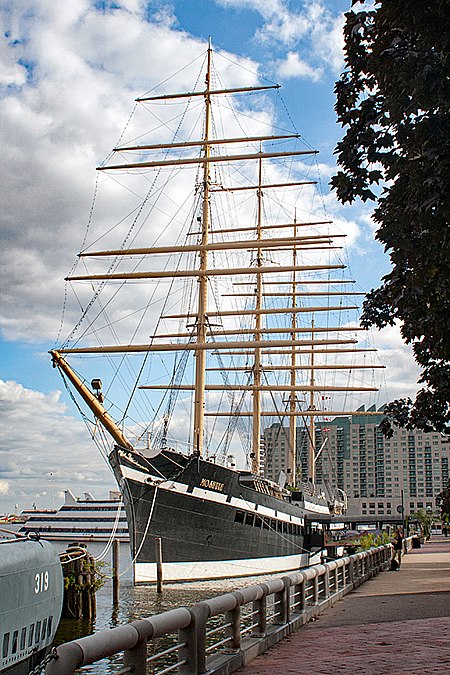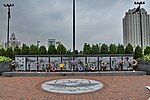USS Olympia (C-6/CA-15/CL-15/IX-40) is a protected cruiser that saw service in the United States Navy from her commissioning in 1895 until 1922. This vessel became famous as the flagship of Commodore George Dewey at the Battle of Manila Bay during the Spanish–American War in 1898. The ship was decommissioned after returning to the U.S. in 1899, but was returned to active service in 1902.
She served until World War I as a training ship for naval cadets and as a floating barracks in Charleston, South Carolina. In 1917, she was mobilized again for war service, patrolling the American coast and escorting transport ships.
After World War I, Olympia participated in the 1919 Allied intervention in the Russian Civil War and conducted cruises in the Mediterranean and Adriatic Seas to promote peace in the unstable Balkan countries. In 1921, the ship carried the remains of World War I's Unknown Soldier from France to Washington, D.C., where his body was interred in Arlington National Cemetery. Olympia was decommissioned for the last time in December 1922 and placed in reserve.
In 1957, the U.S. Navy ceded title to the Cruiser Olympia Association, which restored the ship to her 1898 configuration. Since then, Olympia has been a museum ship in Philadelphia, where it is now part of the Independence Seaport Museum. Olympia was designated a National Historic Landmark in 1966.
The Olympia is the oldest steel American warship still afloat. Repairs, estimated at $10–20 million, were desperately needed to keep the Olympia afloat, and in 2010 the Independence Seaport Museum considered finding a new steward for the ship. By 2014, the museum reversed its plan to find a new steward and soon obtained funding from private donors as well as federal and state agencies to begin work on repairing the ship. The museum invested in extensive stabilization measures including reinforcing the most deteriorated areas of the hull, expanding the alarm system, installing a network of bilge pumping stand pipes (which will provide greater damage control capability in the unlikely event of a hull breach), extensive deck patching and extensive repair and recoating of the ship's rigging. This work was made possible by donations from the National Trust for Historic Preservation, the U.S. Cruiser Sailors Association and many individual donors. By 2017, the museum completed the first phase of repairs to the ship and has embarked on an ambitious national campaign to raise the $20 million needed to dry-dock the Olympia and address waterline deterioration of the hull.











